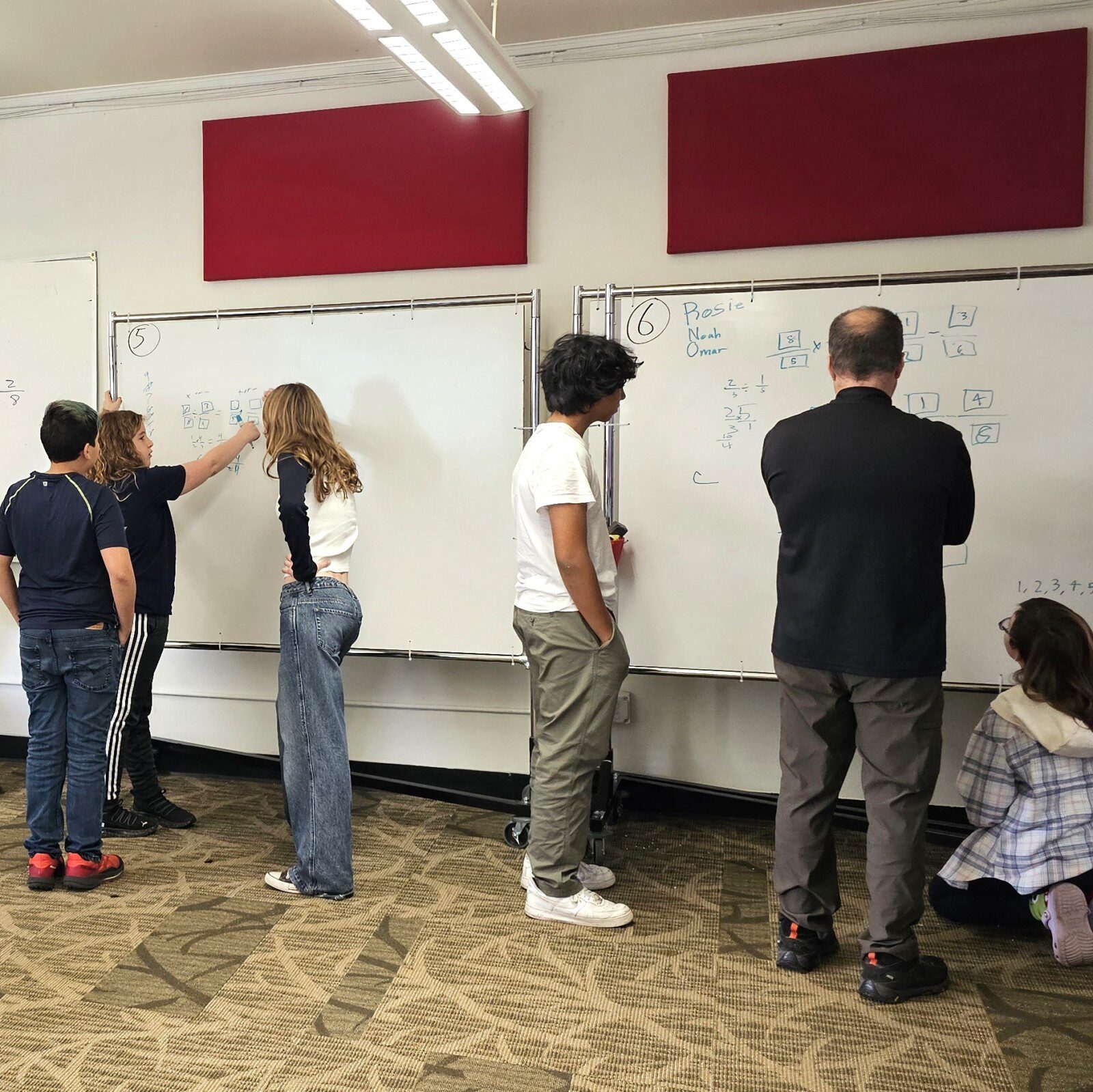Program Updates: Math – January 2025

MATH
6th grade (Scott)
Adventures in Numeracy
In our tireless effort to become fluent with numbers and operations, we are currently working with divisibility. Students have searched for and been introduced to various tests for divisibility (the main one being… “divide and see whether or not there is a remainder”) and we are now linking divisibility to our previous work with factors, multiples, and prime factorization. A couple of students discovered and were able to explain the mathematical reasoning behind a “shortcut” for testing divisibility for a very large number (like 52,381,435,224) when the divisor is 4. Their strategy focused on place value and the fact that 4 goes evenly into 100. Oh, yeah!
We are currently hopping down number lines, looking for known, nearby multiples, relearning and practicing various forms of division (like partial products and long division), and asking the two fundamental division questions: 1. If I start with this much stuff and make it into this many groups, how many things are in each group? And more importantly (especially with fractions): 2. If I start with this much stuff and make it into groups this big, how many groups are there?
Now you try it: Can you draw a tape diagram that shows how many groups of 2/5 can be made out of 11/3? If you are planning to multiply the dividend by the divisor’s reciprocal, please ask your favorite 6th grade mathematician if they can explain why that is mathematically “legal” and how else one might go about solving the problem. Today, we tackle one of the best divisibility challenge problems of all time.
7th grade (Virgil)
The seventh grade is finishing their geometry unit and learning how their understanding of the coordinate system will help them visualize linear equations as we begin exploring algebra. We are using data tables to understand proportional relationships better, creating graphs and equations from those tables, and decoding story problems.
8th grade (Scott)
Algebra 1
As the semester draws to a close, we are diving into Functions and Function Notation. We will soon be confirming the important fact that not all functions are linear, though they can still be graphed and solved. We have solved systems of equations and inequalities, and some interesting questions emerged about whether one can simplify inequalities and whether there is a way to solve systems of inequalities or non-linear systems.
So much graphic variety waits just around the corner. If you want to know how we’re making sense of graphs and situation descriptions, ask about the diminutive mathematician on the swing or the rocket and drone heights as a function of time.
Today, we step back into the “museum of outdated human activities” to build a “piecewise function” for postage stamps - looking at cost as a function of weight. If you can think of an example that fits better in 2025, please put your idea in an envelope and send it our way. 😉

